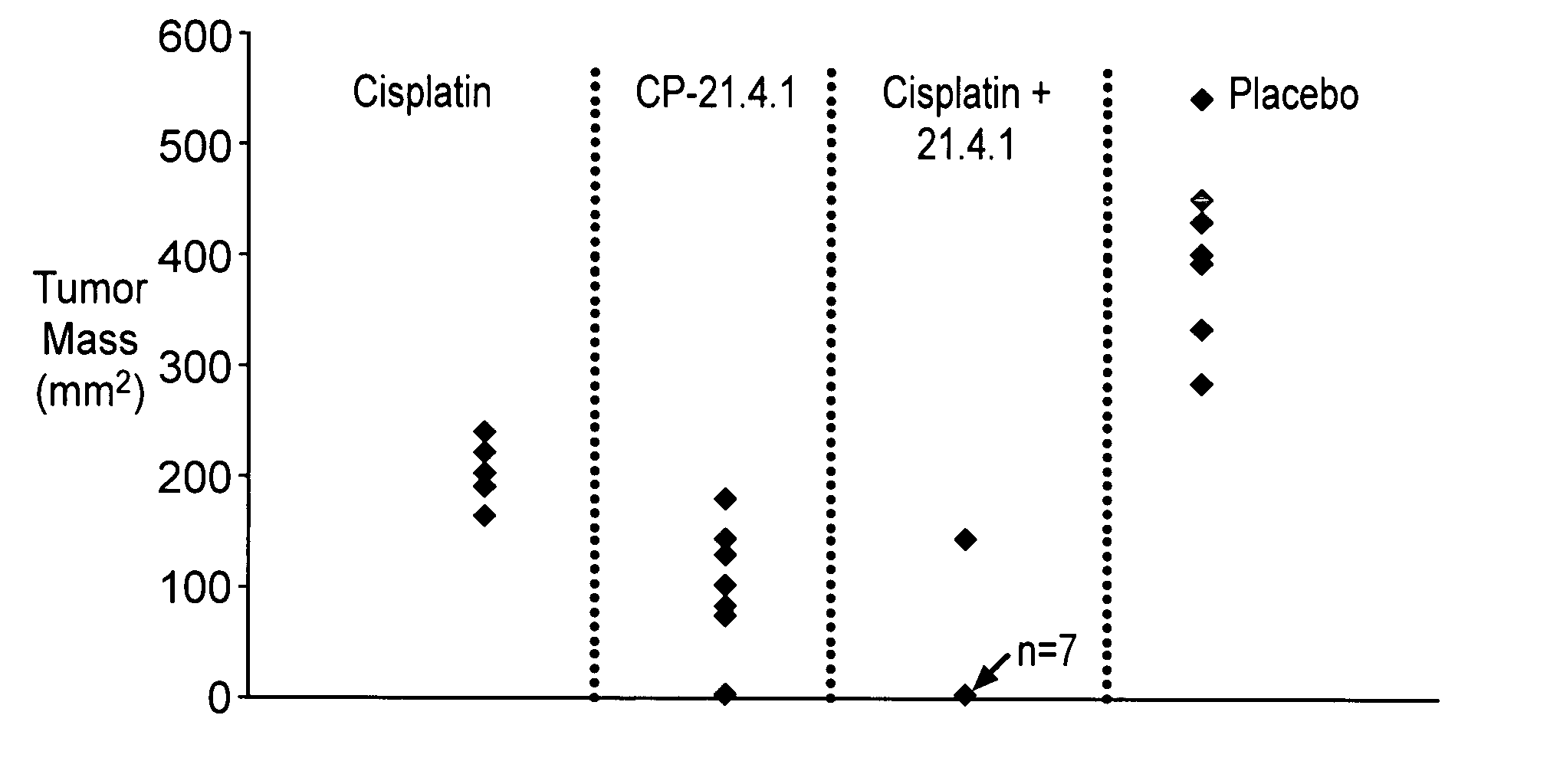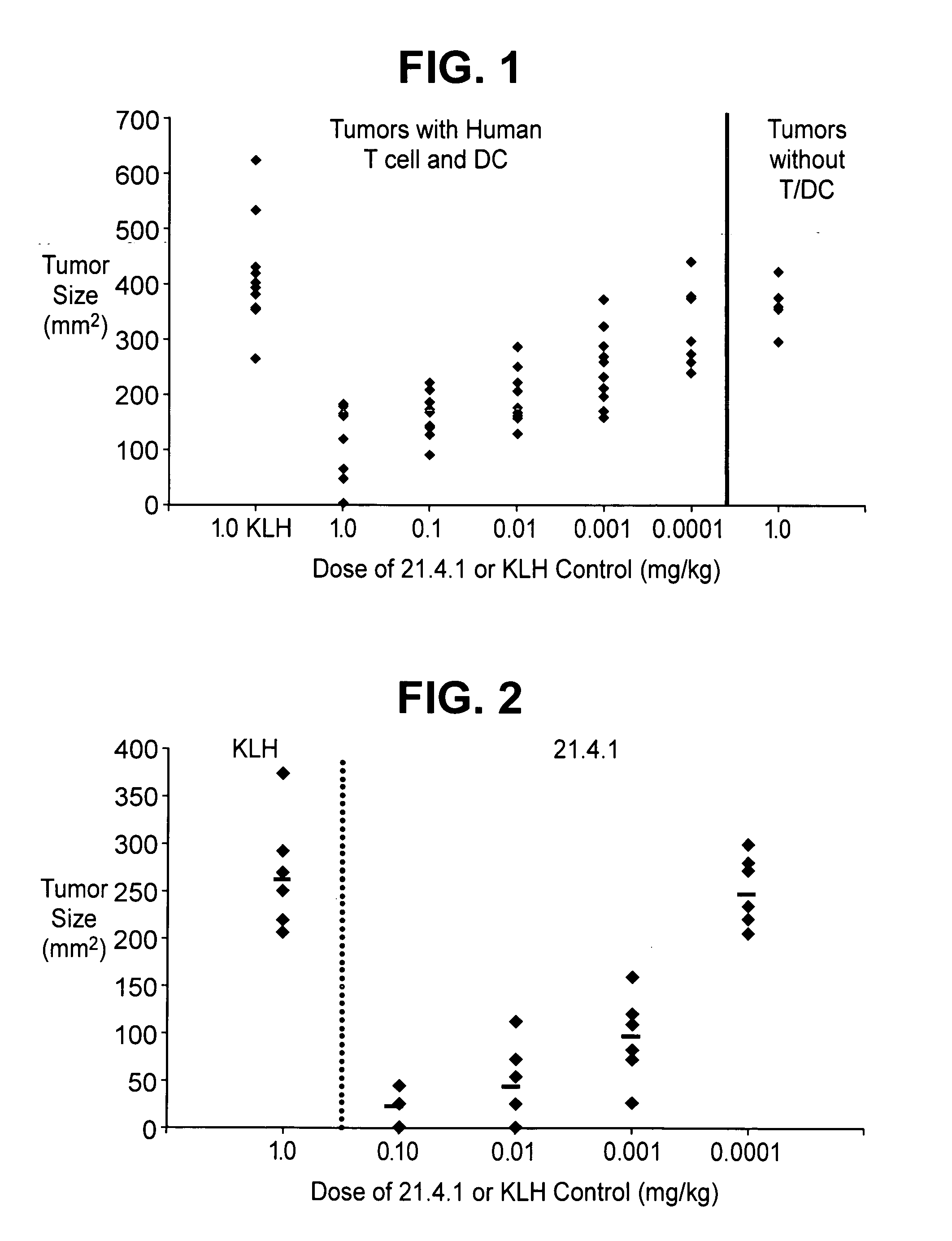CD40 antibody formulation and methods
a technology of cd40 antibody and formulation, which is applied in the field of cd40 antibody formulation and methods, can solve the problems of high-effective methods of administration and formulation of cd40 antibodies that have not been described
- Summary
- Abstract
- Description
- Claims
- Application Information
AI Technical Summary
Benefits of technology
Problems solved by technology
Method used
Image
Examples
example 1
Effects Of Antibody On Lymph Node Cells From Cancer Patients
[0043] Effects of a human anti-CD40 antibody (21.4.1) on lymph node cells obtained from cancer patients stimulated with autologous tumor cells was examined.
[0044] Lymph node cells and tumors were collected from patients with renal cell carcinoma, non-small cell lung cancer, transitional cell carcinoma of the bladder, colon cancer, prostate cancer, and head and neck cancer. The lymph node cells were placed into culture together with irradiated collagenase treated tumors (recovered from the same patient) in the presence or absence of 21.4.1 (1 μg / mL; 6.7 nM). Proliferation was assessed using 3H-thymidine 96 hours later. The number of INFγ producing cells was assessed by ELISPOT, following restimulation.
[0045] The antibody enhanced the number of IFNγ+ positive T cells in cultures of lymph node cells stimulated with tumor antigen. Further, the proliferation of these lymph node cells in response to tumor antigen was enhanced ...
example 2
Binding of Antibody to Fc Receptor
[0047] The binding of an anti-CD40 antibody (21.4.1) to Fc receptors on human and cynomolgus leukocytes was examined.
[0048] Flow cytometric studies indicated that FcR types FcγRII (CD32) and FcγRIII (CD16), as well as very low levels of FcγRI (CD64), were expressed on human leukocytes. The binding of 21.4.1 to Fc receptors (FcR) on human or cynomolgus peripheral blood leukocytes was determined by using 125I-21.4.1 and a human IgG1 control mAb. Human leukocytes from normal donors or cynomolgus leukocytes were isolated from whole blood using plasma gel and washed thoroughly to allow dissociation of receptor-bound serum immunoglobulins. Centrifugation through a sucrose cushion was used to separate cell-bound and free antibodies. Studies were performed at 4° C. in the presence of sodium azide to prevent receptor internalization.
[0049] 21.4.1 was tested for specific binding to FcR by using excess unlabeled human IgG2 isotype matched antibody as a comp...
example 3
Whole-Blood Cytokine Release Assay
[0051] An anti-CD40 antibody (21.4.1) was tested for its ability to induce the release of cytokines from unstimulated human whole blood using an in vitro whole blood assay which correlates with induction of antibody-mediated cytokine release in humans. 21.4.1 was tested at 1, 10 and 100 μg / mL, along with a murine anti-human CD3 IgG1 as a positive control that induces cytokine release through an Fc mediated pathway, and LPS as a second positive control that induces cytokines by stimulating macrophages. The donors used included individuals that responded to both the murine antibody and LPS (4 donors), as well as individuals who only responded to the LPS (3 donors). Heparinized whole blood was cultured with 21.4.1 for 5 hours and plasma was collected and analyzed for tumor necrosis factor alpha (TNF-α), interferon gamma (INF-γ) and interleukin-6 (IL-6) by ELISA (using commercially available kits). Cultures were also incubated for 48 hours and analyzed...
PUM
| Property | Measurement | Unit |
|---|---|---|
| concentration | aaaaa | aaaaa |
| concentration | aaaaa | aaaaa |
| concentration | aaaaa | aaaaa |
Abstract
Description
Claims
Application Information
 Login to View More
Login to View More - R&D
- Intellectual Property
- Life Sciences
- Materials
- Tech Scout
- Unparalleled Data Quality
- Higher Quality Content
- 60% Fewer Hallucinations
Browse by: Latest US Patents, China's latest patents, Technical Efficacy Thesaurus, Application Domain, Technology Topic, Popular Technical Reports.
© 2025 PatSnap. All rights reserved.Legal|Privacy policy|Modern Slavery Act Transparency Statement|Sitemap|About US| Contact US: help@patsnap.com



